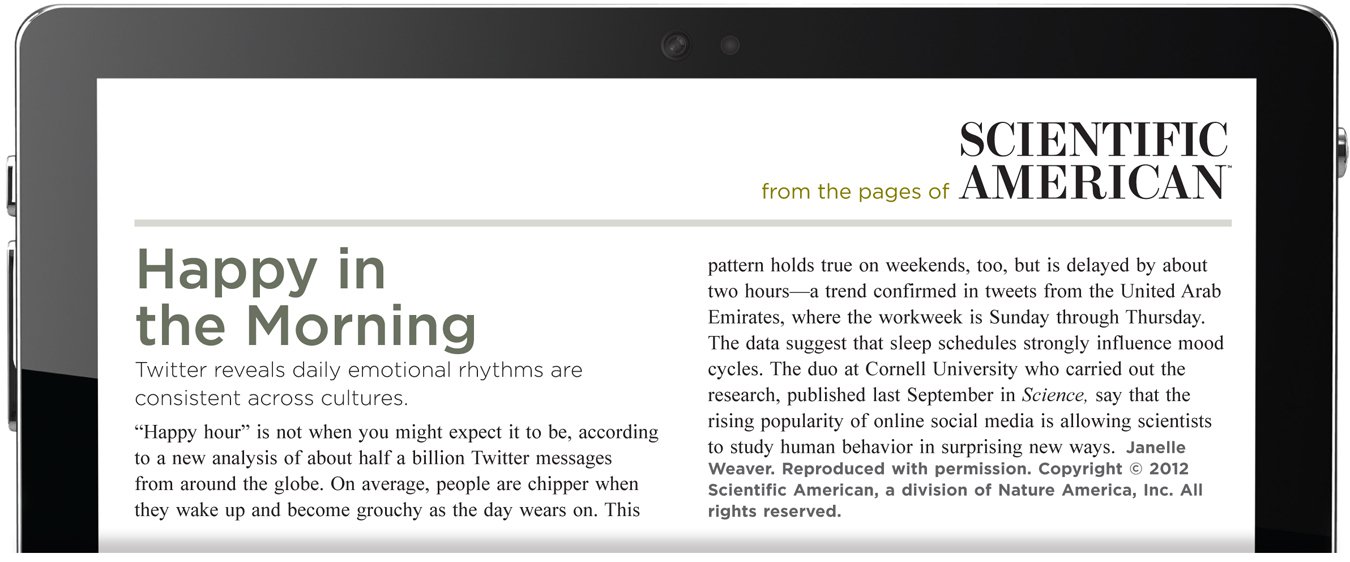Chapter 1. Chapter
Article
From the Pages of Scientific American
Happy in the Morning

Click the image to enlarge. Click "Next" to continue.
1.1 Quiz
1. In the study described, researchers conducted an analysis of the emotional valence of Twitter messages. What type of research is this?
| A. |
| B. |
| C. |
| D. |
2. Someone might wonder if the causal mechanism behind changes in the emotional valence of people’s Tweets is an accumulated disgust from the horrible comments people can find online. How might the authors of the study respond to this contention?
| A. |
| B. |
| C. |
| D. |
3. The findings of the study show that people’s mood states are:
| A. |
| B. |
| C. |
| D. |
4. Some research by Deiner and by Mancini has contended that people simply get “used to” being happy; the experience of happiness quickly resets to a baseline. This concept is known as:
| A. |
| B. |
| C. |
| D. |
5. The Twitter study collected data from around the world. The data from the United Arab Emirates, in part, led the researchers to conclude that __________ strongly influenced mood cycles.
| A. |
| B. |
| C. |
| D. |